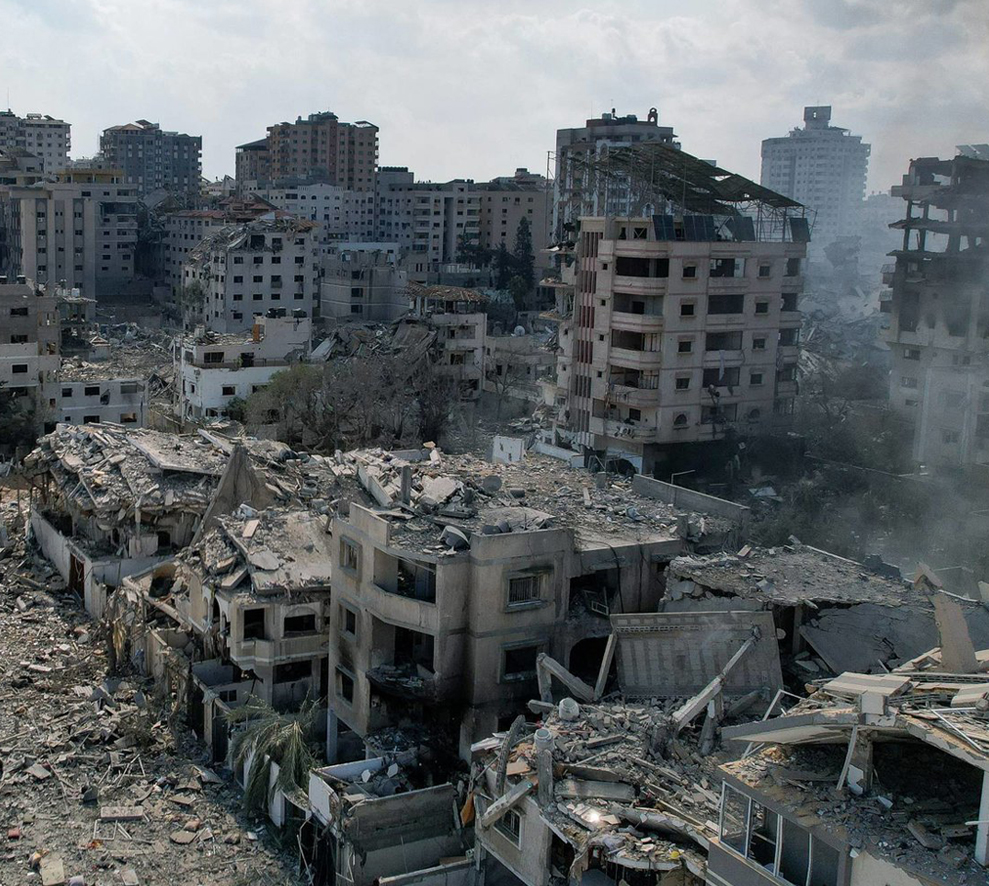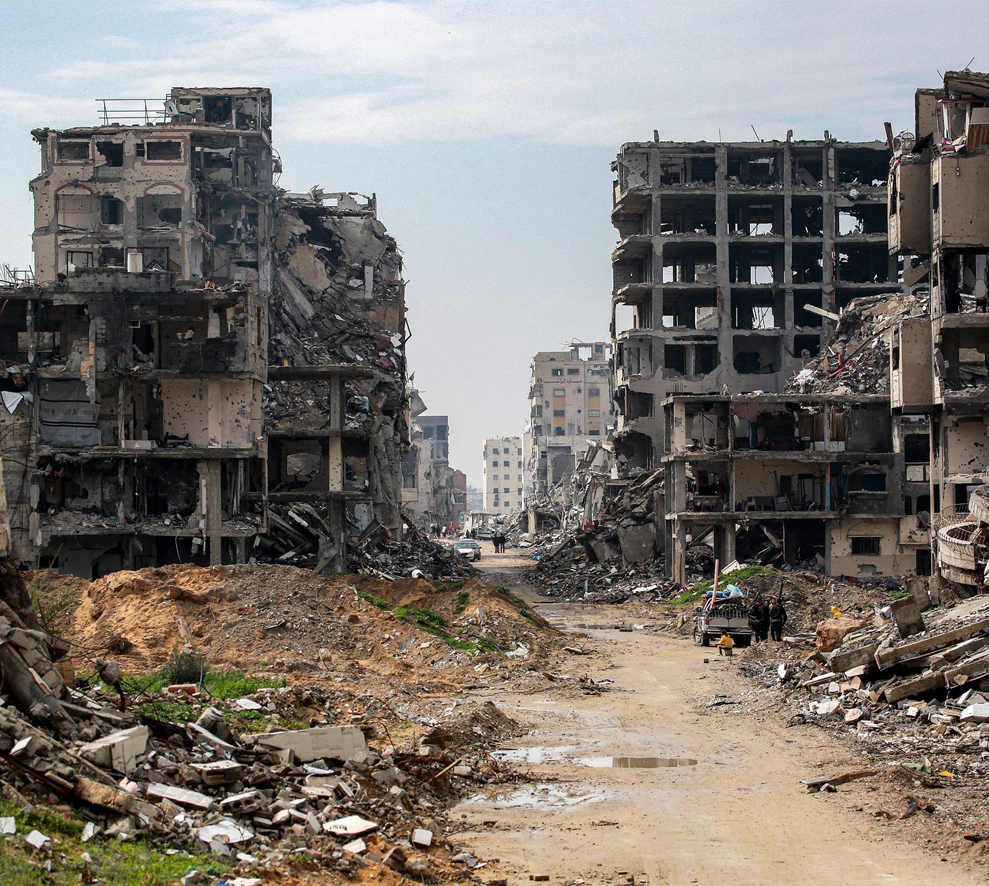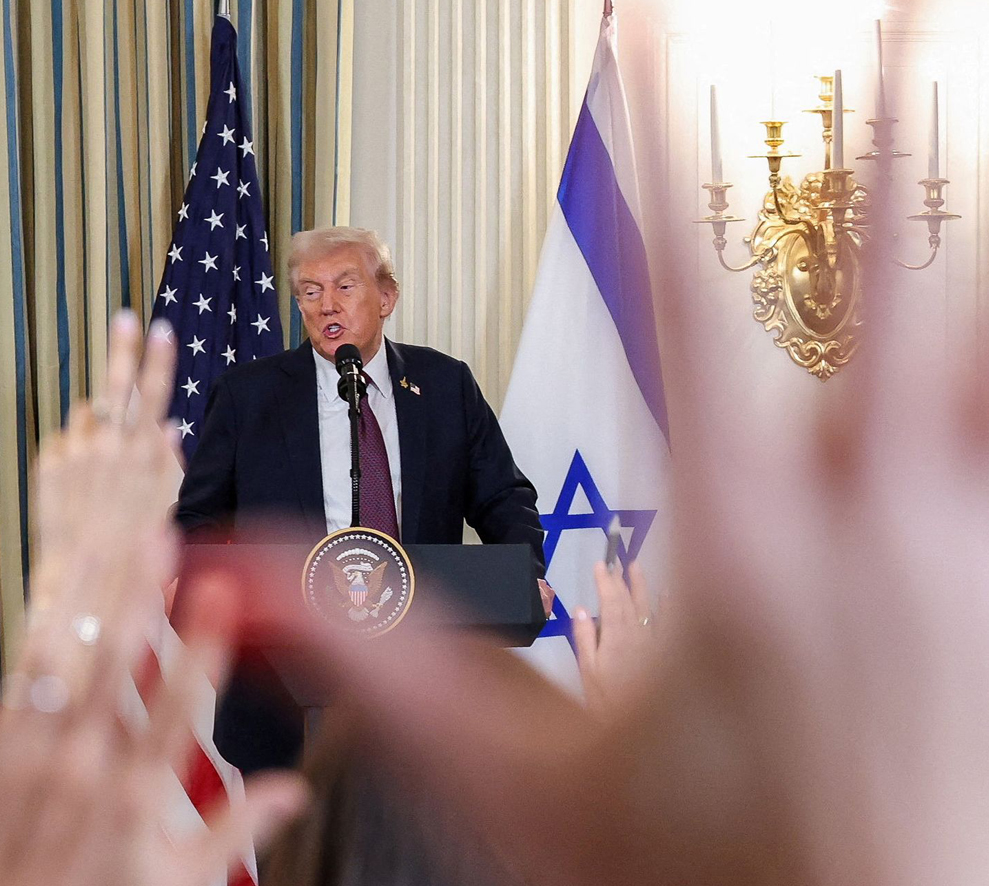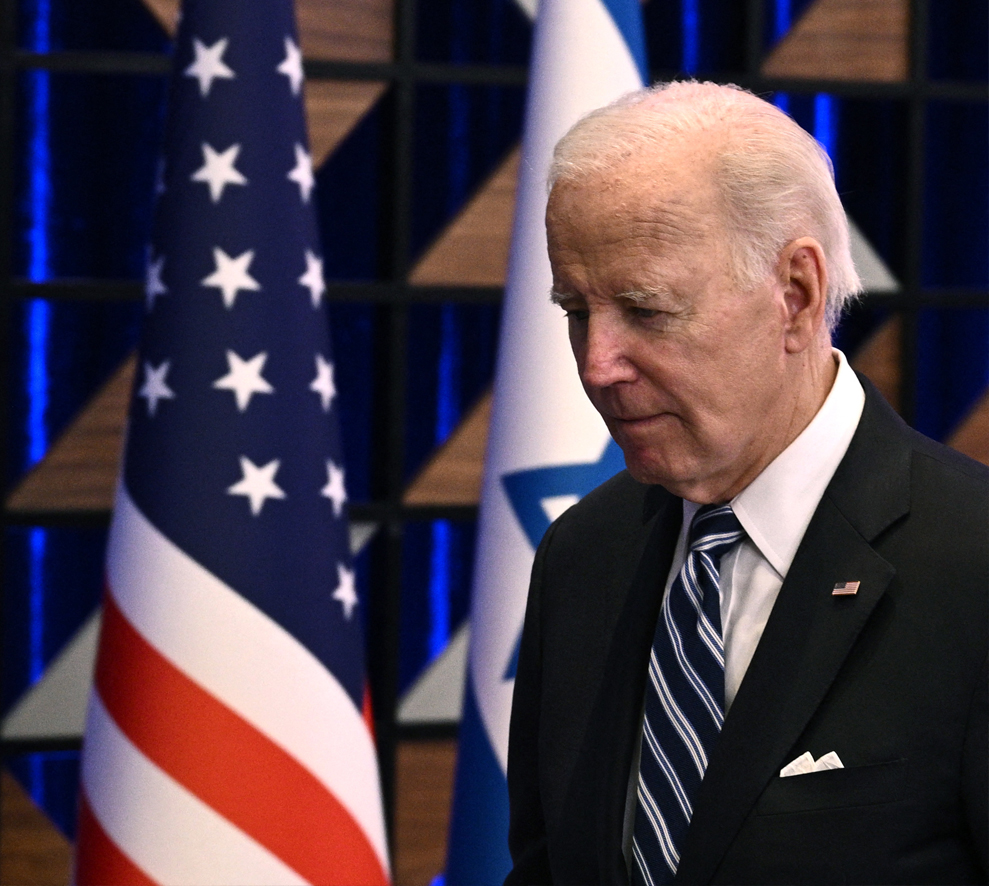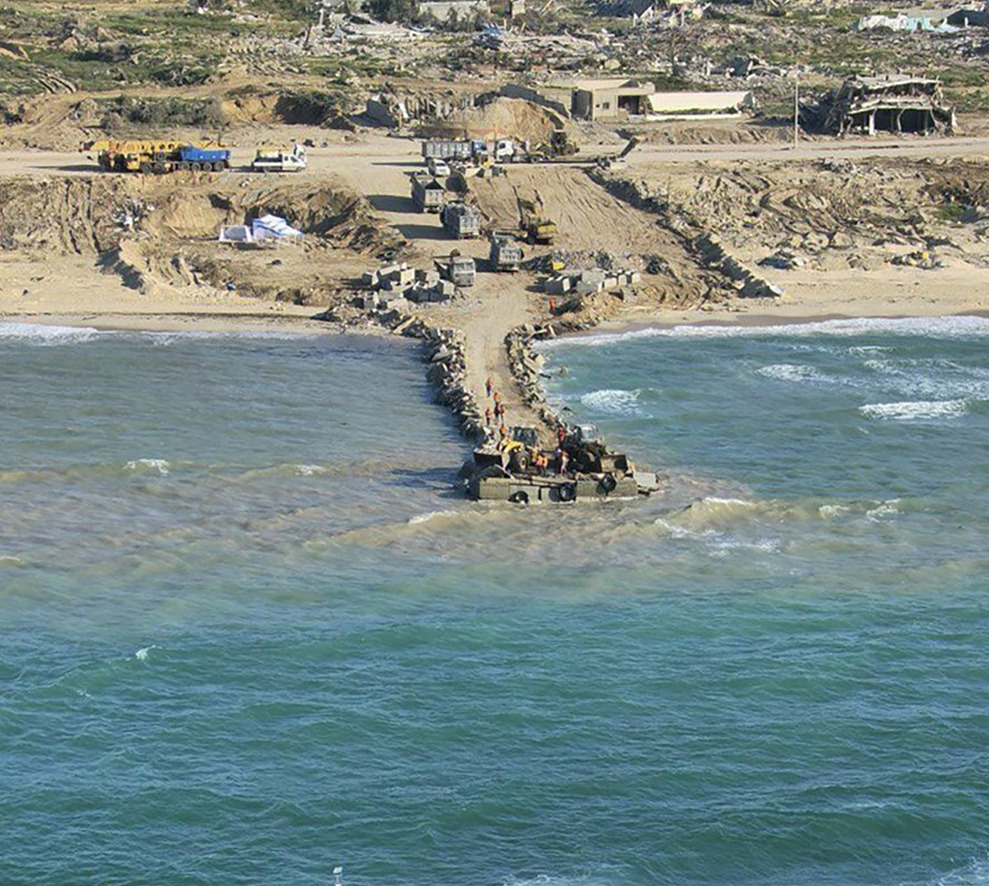The war in the Gaza Strip is a pivotal event in the history of the Palestinian cause and a turning point in its course. As the war continues and intensifies, field circumstances and developments have begun to impose transformations on the overall Palestinian landscape, especially in the Gaza Strip and the West Bank.
In the Gaza Strip, Israel is nearing the end of the battle in Khan Yunis while preparing to start another in the city of Rafah. Meanwhile, the United States has begun to establish a seaport where it can safely offload shipments of humanitarian aid before they are delivered to tribal forces. Meanwhile, the West Bank is facing one of its most risky security crises with the simultaneous military escalation of the war in Gaza alongside growing fears of a security breakdown and political collapse.
These concerns have prompted the United States and regional countries to help activate and enhance the role of the Palestinian Authority so that it can assume control over the West Bank and then the Gaza Strip. This led to the resignation of the Palestinian government headed by Mohammad Shtayyeh on February 26, 2024.
Three Moves Highlighted
The post-war landscape of the Palestinian cause oscillates between three main moves by Israel, the United States, and Hamas. Whether inside the Gaza Strip or on the foreign level, Hamas remains adamant in its refusal of a temporary truce that could lead to the release of the Israeli prisoners it detains without an Israeli military withdrawal from the Gaza Strip or an end to the imposed siege on it.
This is because Hamas is aware of American and Israeli objectives to end Hamas’s control and governance of Gaza and replace it with other options, despite both nations having differing preferences for these options.
In light of this landscape, it is likely that Hamas’s field leadership in the Gaza Strip will want to minimize the strategic risks they may be exposed to and exit the war with at least a minimum claim of achievement. This necessitates preserving the prisoners’ card they hold as an ace to be played in the negotiations in order to win the guarantee of Palestinian sovereignty over Gaza. Meanwhile, Hamas’s leadership abroad is trying to maintain the organization’s political structure, as well as its regional and international relations.
As for the United States, it seeks to prepare the Palestinian landscape for a two-state solution by reactivating and reforming the Palestinian Authority in the West Bank in a manner that enables it to control the Gaza Strip. While there is regional and international consensus on the U.S. goals, some disputes surfaced regarding the need for Hamas to participate in shaping the next Palestinian landscape, which Washington rejects despite Hamas’s flexibility towards that proposal.
For instance, for the first time in its history, Hamas agreed with the statement released after a meeting of the Palestinian factions in Moscow that declared the Palestine Liberation Organization (PLO) as the sole legitimate representative of the Palestinian people. In addition, Hamas agreed to continue such meetings in order to reach a comprehensive national unity and government that includes all Palestinian forces and factions within the framework of the PLO. Moreover, Hamas did not refuse to cede the administration of the Gaza Strip. A member of Hamas’s Political Bureau, Musa Abu Marzouk, gave a statement about Hamas’s readiness to form a technocratic government to administer Gaza.
However, these moves are matched by other developments in Israel, especially its War Council’s rejection of any truce leading to a ceasefire. Another development occurred in February 2024 when Israeli Prime Minister Benjamin Netanyahu presented a “Document of Principles” that included his plan for the Gaza Strip in a post-Hamas era. The document’s introduction was preceded by the Israeli Knesset’s approval by 99 of its 120 members of a resolution that rejected the unilateral recognition of the Palestinian state.
This leads to a deep state of uncertainty, especially since Israel—dominated by the vision of the extreme right—rejects any form of non-Jewish sovereignty west of the Jordan River. This rejection has consequent policies and measures, such as intensifying settlement and Judaization in the West Bank, rejecting the two-state solution, strengthening Israeli security control over the entire occupied Palestinian territory, and treating Palestinians as civil and religious minorities living under Israeli sovereignty, as expressed in the “Document of Principles.”
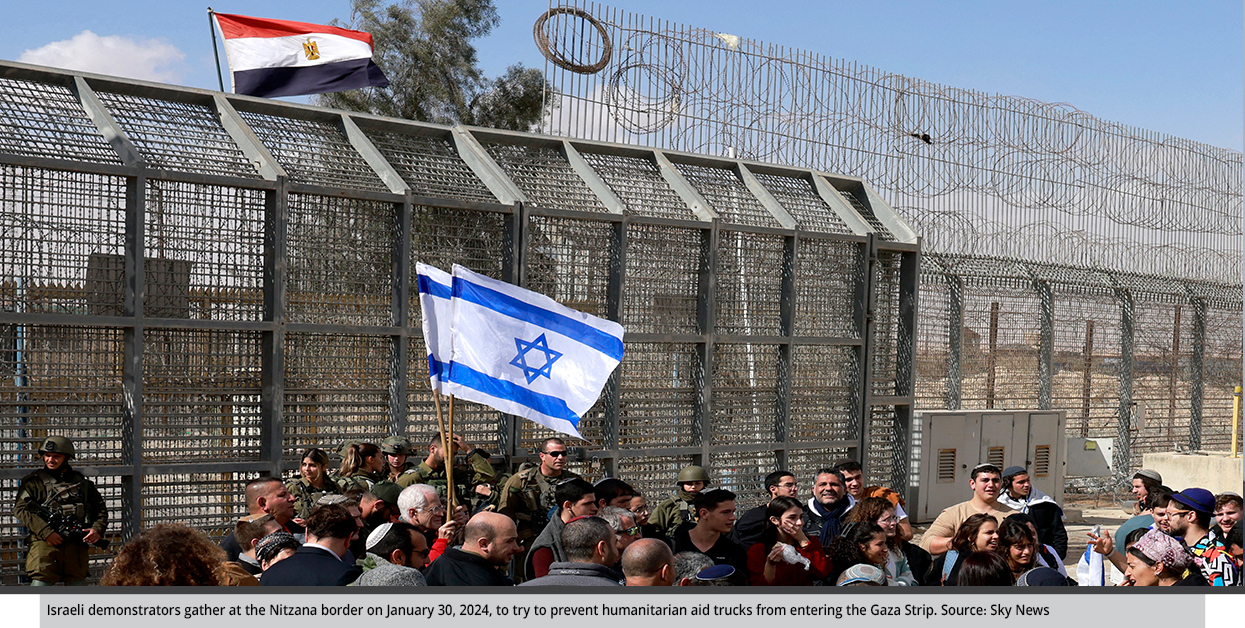
Scenarios of the Next Palestinian Landscape
In light of the above, the transformations of the Palestinian political landscape can be interpreted through three main scenarios related to the positions of Hamas, the United States, and Israel, and the challenges facing their plans.
First Scenario: Forming a Palestinian Technocrat Government
The mission of this government would be to manage the transitional period in the Gaza Strip and the West Bank, and to undertake Hamas’s integration into the future post-war Palestinian political system, whether through Hamas formal accession to the PLO, or organizing general presidential and legislative elections, with Hamas direct or indirect participation.
This scenario is the most complex and difficult, and related to several conditions, including:
- Partial or total changes in the Israeli government, especially in light of the increasing U.S. opposition to Netanyahu and his partners from extremist parties and the White House agreeing to a meeting between National Camp Party leader Benny Gantz and U.S. Vice President Camilla Harris without first discussing it with Netanyahu, Gantz’s political opponent.
- The developments of the U.S. position, such as the U.S. army’s directive to establish a temporary port on the Gaza coast in order to deliver humanitarian aid, which President Biden stressed that it cannot be a negotiating card for Israel, and that the only real solution is the two-state solution, and that there is no other way to guarantee peace between Israel and all its Arab neighbors, including Saudi Arabia.
- The degree to which the Palestinian Authority seriously and successfully responds to the requirements of administrative, financial, and security reform will determine the level of support from regional countries as well as the integration of Hamas into the new Palestinian political system.
Second Scenario: Forming a New Palestinian Technocrat Government in the West Bank Only
This scenario assumes the formation of a technocratic government in the West Bank only with the governance and administration in the Gaza Strip suspended pending either the outcome of negotiations between Israel and Hamas or the ineffectiveness of Israel’s security control weakened by continuous military operations against the Israeli Army. The situation may deteriorate to the point where it is difficult to form an administration with political structures and institutions.
Thus, this scenario is related to developments on the ground in the Gaza Strip, the prospects of reaching temporary truce agreements that would later lead to a complete ceasefire, and fulfilling the minimum demands or conditions set forth by Israel and Hamas. It is also related to the extent of pressure that the U.S. administration may exert on the Israeli government, as well as the positions of the active countries of the region and their ability to influence the domestic Palestinian file.
Third Scenario: The Survival of the Palestinian Geographical and Administrative Division
The formation of a new Palestinian government in the West Bank only and the success of the Israeli plan to impose a local administration in the Gaza Strip while maintaining Israeli security control over the Strip will perpetuate the internal Palestinian division and keep Hamas outside the Palestinian political system.
This scenario is related to the continuation of the Israeli war on Gaza, the escalation of its course through an Israeli ground operation in Rafah, and the tightening of Israeli control over the Egyptian border with the Gaza Strip. It would require the continuity of the current Israeli government and it will gain political legitimacy if former President Donald Trump returns to the White House.
In conclusion, the Palestinian political landscape may become more fragile during the post-war phase due to the huge variation in the perceptions and plans of Hamas, Israel, and the United States in the Palestinian landscape—and the great challenges each will face in achieving their goals.
Keep in touch
In-depth analyses delivered weekly.

Related Analyses:







